SIGN UP TO OUR NEWSLETTER FOR DISCOUNTS, PROMOTIONS and PRIZES!
The best Shudder original horror films
Host (Directed by Rob Savage, 2020)
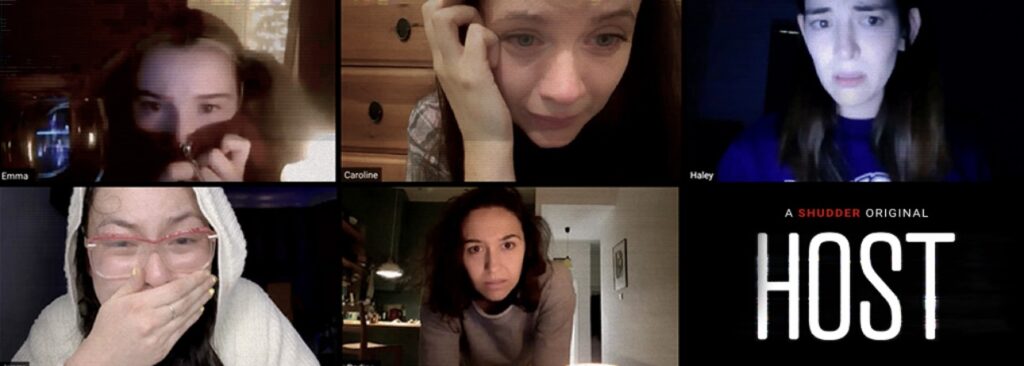
In the midst of the Covid-19 lockdowns, Rob Savage joined a virtual meeting with a team of his friends, however, halfway through the camaraderie, Savage convinced the group that he was hearing strange noises coming from his suspectedly haunted attic. Equipped with his device in hand, he virtually led his friends into the cold, pitch-black loft, little did they know, Savage had pre-edited a jumpscare clip of a demon lurching out and spliced it into the meeting. Plenty of screams and gasps were followed by laughter and applause at this truly epic prank. Savage posted this nifty play online, which led to attention from major outlets.
The viral success, teamed with his filmmaking history and clear talents in the horror field led to a bidding war from film studios for him to take this idea and adapt it into a full-length feature. Shudder won the rights and the rest was history. Host was met with heaps of praise, particularly in ode to the film’s organic quality, with the film packing in doses of realism despite the fantastical, paranormal storyline – meaning that the ghostly apparitions became all the more provoking and genuinely frightful.
The film additionally makes use of its desktop, Vérité aesthetics, creating an internal and seemingly authentic zoom call, which many can recall was quite a sign of the times circa Host’s release. Particularly for viewers who watched Host upon its initial release, the film injected a breath of fresh air into cinema. It was a time when cinema visits were largely prohibited and being trapped at home was the ‘norm’, so to get a brand new horror that was conceptualised, filmed and released at such a dark time was a true treat that still rocks five years on.
Caveat (Directed by Damian McCarthy, 2020)
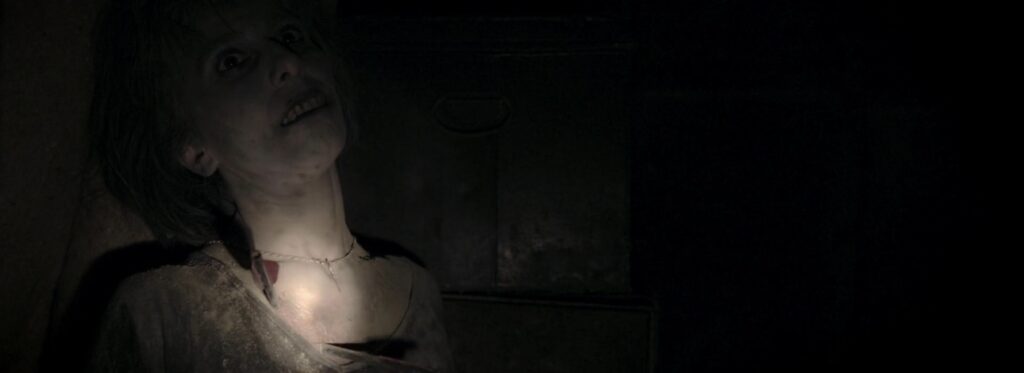
For horror lovers who have seen nearly every ‘must-see’ and ‘classic’ film that the genre has to offer, it can be difficult to stifle a little scare or jump out of them, let alone a whopping frightful experience that will have them watching through peaked fingers. However, as Irish filmmaker Damian McCarthy proves, this is definitely possible as his debut feature Caveat is host to some of the scariest moments modern horror has to offer.
It can be said that Caveat is a slow burn and a film that honestly takes a while to make sense, yet the deliberately drawn out narrative is ultimately to the film’s benefit as the finale will make viewers wish they could return to the creepy, yet tame atmosphere of the first act. This effective white-knuckle maker follows Issac (Johnny French), who is hired by Moe (Ben Caplan) to watch over his niece Olga (Leila Sykes), who has a habit of going catatonic with stress after the disappearance of her mother and death of her father.
The job seems easy, but there is one caveat… Issac has to remain harnessed in a chained armour, to which only Olga possesses the key. As one can expect, this supposed ‘easy’ mission soon goes array, leading to a chilling conclusion. Caveat’s simplicity is key to its success as the stripped back setting, limited cast and confined storyline becomes a testament to low-budget independent cinema that allows excellent talent such as McCarthy the chance to release a film that is terrifying to the core.
Oddity (Directed by Damian McCarthy, 2024)
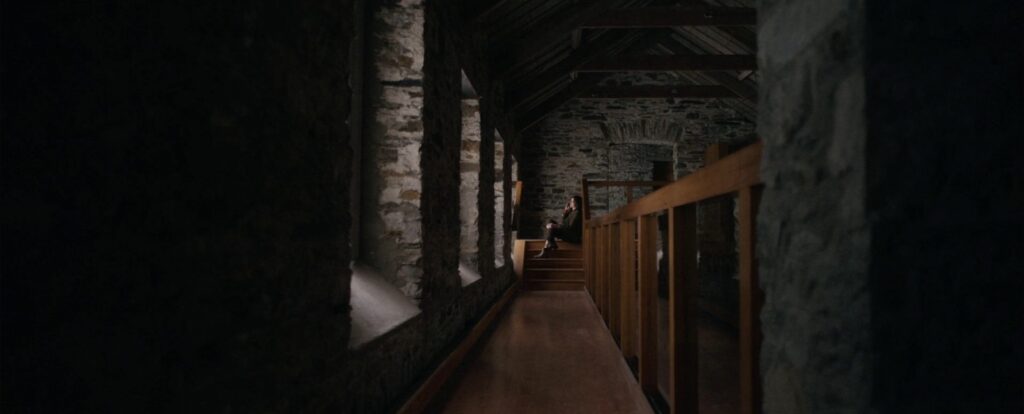
If Damian McCarthy’s Caveat hits a nerve, just wait until you watch his second feature Oddity. This nail-bitingly frightful, morbidly intriguing and utterly sinister horror is one for the ages, with the film being a catalyst for nightmares. Oddity begins with Dani (Carolyn Bracken), all alone refurbishing her mainly empty, new countryside home, whilst her psychiatrist husband Ted (Gwilym Lee), works nights at a mental health hospital. As the sun goes down and the dark loneliness of the night washes the peculiar wraparound design of the barren house, Dani receives a knock on the door from Olin (Tadhg Murphy), one of Ted’s patients informing her that whilst she tended to her car a man entered the house.
What follows is a journey into hell as the film combines some of the most startling moments that horror has to offer. To describe Oddity as less than an experience would be a disservice to how fear-stricken the film forces you to feel. There are countless ways in which McCarthy provokes a shiver, namely the setting of Dani and Tim’s house. The structure is pleasant on paper: open plan, modernly styled but with country house bricks and a manorial themed essence. However, in the case of Oddity (whose plot is nearly entirely set inside the house), the openness allows for a sense of exposure where there is nowhere to run and hide.
Further stirring the pot is the isolated, rural setting. As someone who grew up only a stone’s throw away from where Oddity was filmed and set in West Cork, Ireland, I can attest to how sequestered and therefore cut-off and secluded such a setting can be. Under the right circumstances, just like Oddity, this desolation can be devastating if tragedy were to strike. It’s a film that enforces a damning sense of vulnerability as we become witness to some of the most malevolent and ominous terror one can imagine.
The Sadness (Directed by Rob Jabbaz, 2021)

This Taiwanese Shudder original continuously oversteps the mark, creating shocking scenes that are beyond revolting in their barbarity to the point of the film gaining a reputation for being a seriously ‘depraved’ watch. As per its reputation, The Sadness is a study into the depravity hidden deep within the psyche and what happens when the innermost savage facets of the human condition is unleashed into the everyday.
The film implements this thought as it sees a viral pandemic shift to the point of no return as a virus unexpectedly mutates, turning people into murderous sadists. The Sadness plays on the horror of the zombie subgenre, with the psychology and physiology of creatures being known for their visceral abject quality that instantly unnerves. The film weaponises the core characteristics of the zombie, by making them even more distressing. Rather than the creature killing for feed, like an intrinsic, animalistic need to hunt and get to the flesh as quickly as possible, The Sadness makes its monster take pleasure in the capture and slow killing of their victim as they torture, mutilate and sexually abuse their target with the biggest self-satisfying grin on their face. The Sadness has no care for life, instead wanting to show the fragileness of civility as it crumbles to the bone.
You’ll Never Find Me (Directed by Indianna Bell and Josiah Allen, 2023)
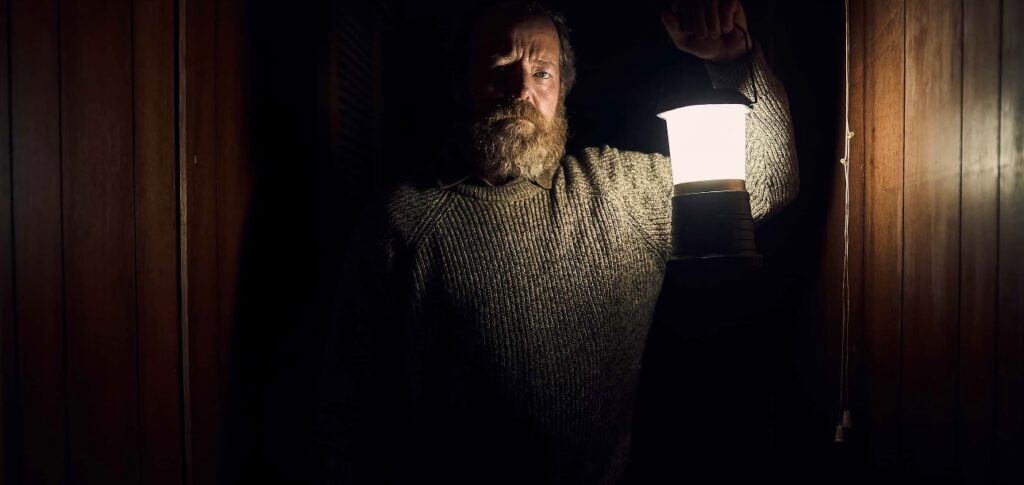
Patrick (Brendan Rock) sits alone in his muted and dimly lit caravan late one night. The rain pelts down on the metal roof. The wind violently batters the curtained windows. The storm is in full bloom, so why is there a loud knock at the front door? You’ll Never Find Me is haunting in its portrayal of Patrick and his late night guest (Jordan Cowen), as the film continually misleads and melts in surreal moments that create a brooding, atmospherically tense horror that is not to be forgotten.
It is the kind of musings that could be thematically compared to a Hitchockian thriller as You’ll Never Find Me ties in an intimate narrative with a filmmaking style that embodies a bubbling pot that is waiting to boil over at any minute. Exacerbating the grittiness of this Aussie Shudder original are the performances by Rock and Cowen, whose combined talents are what allows the film to not feel contained despite its single setting, and to not feel one-dimensional despite only having two present characters. It is rare to come across a film that peels away at you and makes you think, digging until it reaches flesh and unearths a narrative woven with an air of eerie personableness.
Satan’s Slaves (2017) and Satan’s Slaves 2: Communion (2022) (Directed by Joko Anwar)
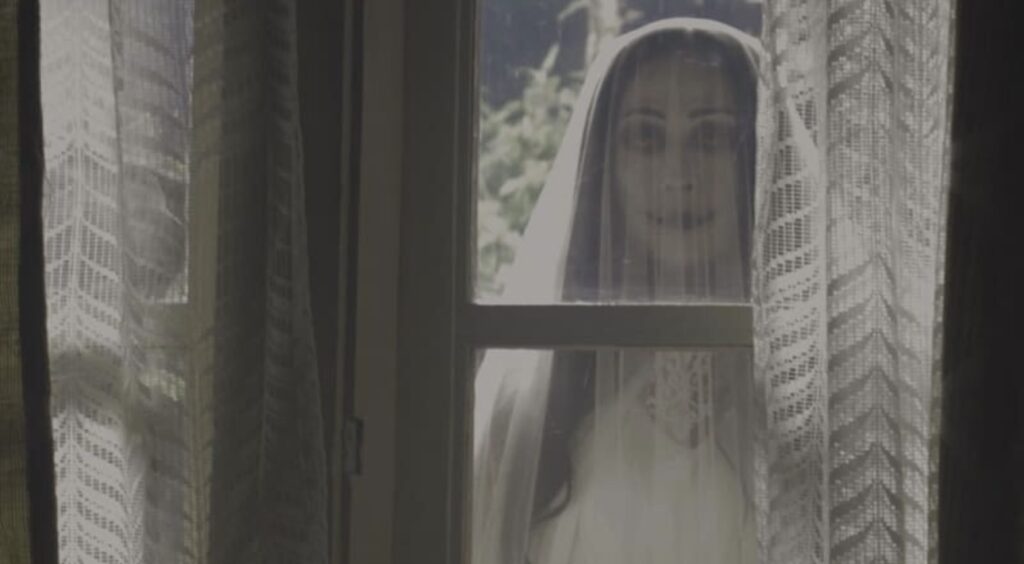
As a child, Joko Anwar snuck into a cinema screen that was playing ‘Satan’s Slaves’ (1980), a horror following a family who are plagued by the supernatural after the matriarch of the family dies. As Anwar grew older and became a budding film enthusiast, filmmaker, writer and critic, he would pester Satan’s Slaves production company, Rapi Films, for him to receive first rights if they were to ever remake his favourite horror film. Lo and behold, roughly thirty-six years after Anwar snuck into the screening of Satan’s Slaves, Rapi signed off the golden rights to Anwar’s dream film, allowing him to take reign and remake the cult classic. Anwar’s remake of Satan’s Slaves, (which acts a prequel to the events in the 1980 film) and its equally as enchantingly disturbed sequel have gone down in Indonesian cinema history as being one of the country’s most successful films, grossing an equivalent $35 million on a combined budget of just over a $1 million.
These benchmark films feature deeply woven narrative structures that tie in an array of lore that helps conjure the rich backstory and various character arcs that take center stage throughout both films. Anwar’s focus on developing the internal mythology surrounding the plot began years prior to the actual making of the films, with the director conjuring the storyline throughout his career as a creator, lovingly spending time crafting exactly how he would retell and expand the story of his favourite film. Both films follow the plot of a family ravished by grief and the consequences that occur due to their deceased mother’s ‘deal with the devil’. Each film ends with more questions than answers, paving the way for the continuation of this soap-opera-esque twisted storyline, with the sequel concluding with a neat and ready setup for the third film which Anwar has teased will be the last notch in this bone-chilling demonic tale.
Speak No Evil (Directed by Christian Tafdrup, 2022)
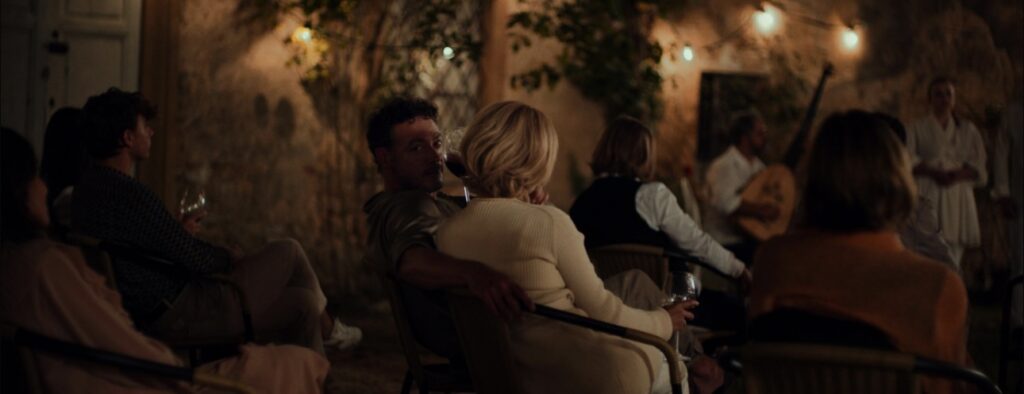
Quite often when characters make so-called ‘stupid’ decisions and take the wrong route to their own demise, viewers bash the film, taking aim at the piece for being nonsensical and frustrating. An example that falls into this category is Speak No Evil. But rather than director Christian Tafdrup and co-writer, Mads Tafdrup, falling prey to poor writing, Speak No Evil is purposefully and meticulously planned to be one of horror’s most infuriating plots. The film follows the meek Bjørn (Morten Burian), and his slightly less passive but still people-pleasing wife Louise (Sidsel Siem Koch), who along with their young daughter Agnes (Liva Forsberg) embark on a beautiful trip to sunny Italy.
Whilst holidaying they meet Dutch couple, Patrick (Fedja van Huêt) and Karin (Karina Smulders) and their young boy Abel (Marius Damslev). The families hit it off and decide to meet up again, however, the atmosphere soon sours leading to an almighty, shocking turn of events. Speak No Evil is a film about submission and agreeableness, how people often conform, bootlick even, to exercise malleability and appease to those who do the opposite and take stride and exert their backbone. Certain decisions are made throughout the film to exercise this divide and create a provocative think piece. This Shudder original is unlike any other, with the film rapidly gaining a large following and receiving heaps of praise and critical acclaim all within a few weeks of its release. Just around the one year mark after its premiere, it was announced that it would be receiving an American remake by Blumhouse Studios starring James McAvoy and Mackenzie Davis. Whilst the remake was surprisingly effective and quite misanthropic just as the original source material, it didn’t quite reach the level of the superb and compelling Shudder Original. Just as the remake demonstrates, Speak No Evil is a one-of-a-kind whose effectiveness is unrepeatable.
Violation (Directed by Madeleine Sims-Fewer and Dusty Mancinelli, 2020)
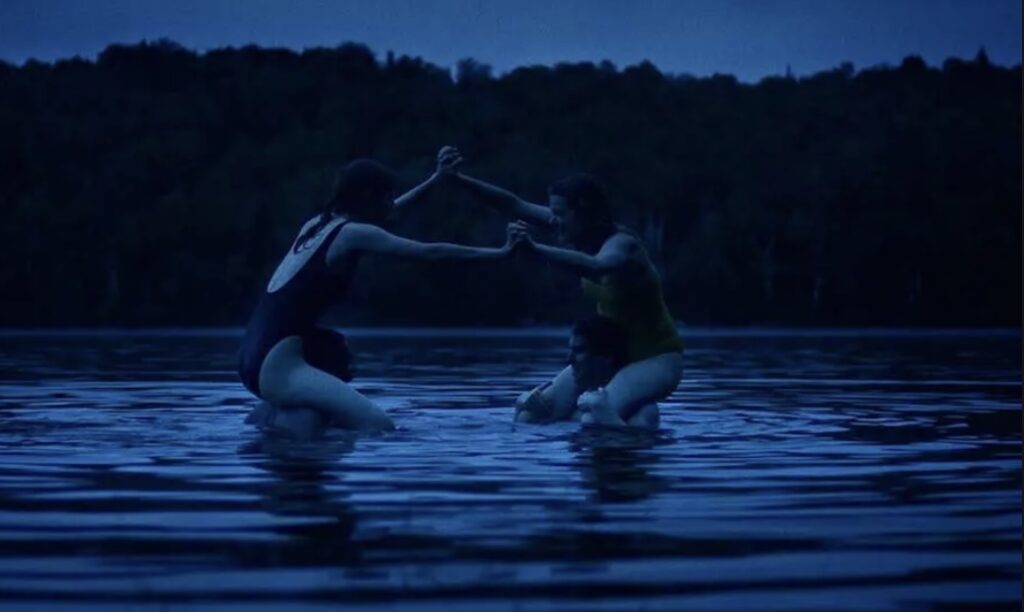
Violation is a brutal take on a very real horror story as we see Miriam (Madeleine Sims-Fewer) and her husband Caleb (Obi Abili) travel to the remote countryside to visit her sister, Greta (Anna Maguire) and her partner Dylan (Jesse LaVercombe). The weekend flows smoothly, but as the sun goes down and the campfire mellows and Caleb and Greta retreat to their respective rooms, Dylan shockingly rapes his sister-in-law Miriam. Dylan downplays the assault and proclaims it was a mutually exclusive, consensual act, leading Miriam to plan revenge against the ultimate violation. The film feels deeply intimate, akin to a personal attack on the viewer where the gut-wrenching visceral take on violence acts as a complete invasion and encroachment to the mind and senses.
Violation is not afraid to show the multidimensional perspectives of such an attack, as many rape-revenge films employ a cathartic element to the situation, which typically ends with the victim feeling a sense of empowerment, an almost silver-lining-like/twisted relief. However, Violation’s portrayal of vengeance is not glossy, smile-inducing or cathartic by any means. Alternatively, it makes the viewer feel unclean and saddened by the entire situation. To be clear, Dylan is never made out to be a force to feel sorrow with, only anger; but Miriam’s descent is just as damning to her healing. Violation is a unique film that will make you emotional, angry, sick and infuriated as this slice-of-life piece unravels.
Want more top horror lists and reviews? Check out our blog here..
Share this story

